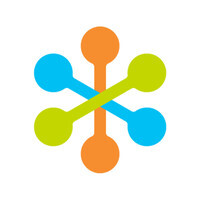What is remote working software?
Remote working software includes tools that allow team members to communicate and collaborate on projects no matter where they are. This category encompasses a variety of other software types, including
social collaboration tools, communication software,
project management tools, and more. The best options create a shared space where employees can access each other and the data they need to perform their jobs and stay engaged.
With the COVID-19 pandemic, many companies have moved to remote work, and quite a few have decided they like the flexibility that it offers. Some have even decided that they aren’t going back into the office when it’s safe to do so. However, remote working presents its own challenges, like keeping your team on task and communicating freely. Choosing the right remote working tool diminishes these challenges and makes
team collaboration easier.
Some remote work tools will even create a kind of intranet for your organization, where information, tools, and resources are stored and only accessible by people in the company. This makes it easier to share files and discuss sensitive information without the fear of it becoming compromised. Most remote working software is cloud-based for better accessibility and security.
Find your new remote working software
The best remote working tools by company size
The remote working tools you choose needs to be able to integrate easily with a variety of other software types to make the transition smoother and keep projects on track. Because you’ll likely be using several different tools together, integrating them is key to your team’s productivity.
Also read:
Tools to Efficiently Manage a Distributed Team
What is the future of remote working tools?
Even before the pandemic, remote work was growing rapidly in popularity. In fact, remote work
has increased by 115 percent in the last ten years. It’s a favored employment perk among employees, and employers are finally starting to see the benefits as well.
Thanks to the technology improvements of the last several years, employees have been able to
remain productive, even while working from home. This revelation has led many employers to embrace the work from home trend, saying they won’t require employees to come back to the office, even when it’s safe to do so. When employees work remotely, employers save money on office space and have access to a larger hiring pool.
Approximately
70 percent of employers have decided that even after the pandemic they will allow some or all of their employees to continue to work from home. Additionally, 66 percent of business owners are rethinking their decision to invest in office spaces. With so many company founders seeing the benefits of remote working, expect remote working tools to become even more common than it is now.
Common features and tools
Because there are so many different types of tools that fall under the umbrella of remote working software, there aren’t a ton of features that all of them have in common. You’ll need to decide what’s most important for your company and choose software that offers those. You may even decide to pair a few different tools to create a remote working suite. Here are some of the most common features.
Also read:
Become a Better Remote Employee With These 5 Tech Solutions
Collaboration
It’s difficult to collaborate with your team when you’re not all in the same room. Choose remote working tools with features that facilitate
collaboration. Instant messaging, shared documents and projects, web conferencing can all make it easier to complete projects when your team isn’t together. Shared documents are also really helpful because two or more people can work on them at the same time, increasing team efficiency. By being able to collaborate on tasks and talk through issues, you can continue to check things off your list no matter where you are.
Also read:
Essential Knowledge Management Tools for Remote Teams
Task management
Employees need to be clear on what their assignments are to stay productive while working from home.
Task management systems allow managers to assign tasks and stay updated on their progress, so nothing falls through the cracks. Many
project management tools also let users leave comments on tasks, so you can clear up any miscommunications or address roadblocks as you run into them. Employees stay organized because they know exactly what’s due and when. They can prioritize the most urgent tasks. Employees can plan out their day to make sure they handle the important things.
Meeting management
Meetings can get out of hand even when they’re in person. Add the extra difficulty of remote work to that, and keeping them on track can feel nearly impossible. Choosing
scheduling software or platforms with meeting management tools lets you plan your meetings ahead of time and keep them on track. Create an agenda, share it, and take notes as things come up. These tools also integrate with web calendars to make sure everyone knows the details. Meetings will be more efficient, and employees will stay engaged.
Best remote working software of 2023
| Product |
Instant Messaging |
Web Conferencing |
Task Management |
Time Tracking |
Recognition |
Free Plan |
 Wrike Wrike |
no |
no |
yes |
yes |
no |
yes |
 monday.com monday.com |
no |
no |
yes |
yes |
no |
no |
 Slack Slack |
yes |
yes |
no |
no |
no |
no |
 Zoom Zoom |
yes |
yes |
no |
no |
no |
yes |
 Microsoft Teams Microsoft Teams |
yes |
yes |
no |
no |
no |
yes |
 Assembly Assembly |
no |
no |
no |
no |
yes |
yes |
 15Five 15Five |
no |
no |
yes |
no |
yes |
yes |
 GoToMeeting GoToMeeting |
no |
yes |
no |
no |
no |
no |
 Clockify Clockify |
no |
no |
yes |
yes |
no |
yes |
 Toggl Toggl |
no |
no |
yes |
yes |
no |
yes |
Enterprise considerations for remote working tools
Enterprise companies transitioning to remote work have a huge undertaking on their hands, especially if they’ve never had remote employees before. Managers and executives can easily fall into the trap of thinking employees are going to slack off now that they aren’t in the office. Instead of micromanaging employees and making them jump through hoops to prove they can be productive, employers should provide them with remote working tools that makes it easier for them to do their work from home.
Also read:
3 Tech Companies Share Their Secrets of Effective Remote Team Management
Project management tools
Rather than hounding your team about increasing their productivity, you can help them do just that with
project management software. This software makes it easy for employees to see everything that’s on their plate and work together to get things completed. Task assignments, shared documents, and instant messaging allow employees to collaborate and finish projects more efficiently. Some project management tools even incorporate a calendar into their platform, so everyone can see what deadlines are coming up.
Communication and conferencing tools
Company meetings are an important place to share ideas and work through issues. Going remote doesn’t mean you have to lose out on valuable meeting time. Communication and
conferencing tools offer a virtual space for your team to meet and flesh out ideas no matter where they’re working from. Plus, you won’t have to deal with crowded conference rooms any more.
Remote working software for enterprises
Wrike
 Wrike
Wrike is a project management tool that makes it easy to track projects and coordinate employees even while working remotely. You can assign tasks, create timelines, and analyze reports all within the platform. It’s easy to use and lets you see exactly what your team has on their plate, so you don’t overload them.
monday.com

Another project management tool,
monday.com, offers customizable templates to organize your projects. There are tons of software integrations, and you can automate simple tasks. Simplify your workflows and create a more efficient remote team.
Zoom
 Zoom
Zoom has been a constant presence in the lives of most working people since the pandemic began. This conferencing platform makes it easy for team members to meet and discuss projects without going to the office.
Hive
 Hive
Hive is a productivity software that consolidates your workload and optimizes your workflow. Choose from Gantt charts, Kanban charts, and tables to organize your projects and timelines. There’s even an instant messaging platform included to simplify communication.
Microsoft Teams
 Microsoft Teams
Microsoft Teams is a communication tool that teams can use to chat and video conference no matter where they are. Your notes, calendars, and documents are all in one place to keep you organized.
SMB considerations for remote working tools
SMBs lose a lot of the
employee engagement and team bonding they’ve come to enjoy when employees move to remote work. That doesn’t have to be the case, however. There are tons of software tools that keep employees engaged and help them bond, even remotely.
Virtual team building
One of the best ways for team members to feel more connected is by giving and receiving recognition. Choosing tools that allow your employees to do this help them feel more engaged with their team and proud of the work they’re doing. Many of these tools are free or low-cost, so you can keep your employees connected without breaking the bank.
You’ll also need to ensure that it’s easy for your team to communicate with each other. Instant messaging platforms make it easier for teams to talk about the projects they’re working on or connect on a more personal level. Building camaraderie among your employees is a great way to reduce turnover and increase productivity.
Time management
Remote workdays are slightly more flexible, so it’s important to see where your
employees spend most of their time, especially if you bill clients hourly. Keep track of how much time your team spends on each project, so you can spot any hangups and resolve them before they become larger issues. After tracking a few projects, you can estimate how long a certain type of project will take and make sure your team is completing it efficiently.
While it may be tempting to track every single thing your employees are doing while they’re working remotely, that’s a surefire way to make them feel micromanaged and unappreciated at work.
Remote working software for SMBs
Slack
 Slack
Slack is a communication platform that makes it easier for your employees to connect with each other no matter where they are. Create separate channels for different groups or projects to make collaboration easier. You can even share documents and integrate the software with other applications.
15Five
 15Five
15Five is a recognition tool used to celebrate employees’ achievements and make them feel appreciated. The system administers weekly check-ins to gauge how your employees are feeling. You can also create and track goals, so you know how your employees are faring in their new remote role.
Kudos
 Kudos
Kudos is an employee recognition platform that offers peer-to-peer recognition, manager badges, and other awards to keep employees engaged and motivated, even while they work from home. You can even give tangible rewards like gift cards for an added bonus.
Calamari
 Calamari
Calamari is a time tracking system that lets you see where your employees are spending their work time and ensure they’re being productive. You can also track attendance and even schedule leave time all within the system. It also integrates with a variety of other software for a seamless remote working suite.
Time Doctor
 Time Doctor
Time Doctor is a time tracking system that logs your employees work time and takes automated screenshots, so you can be sure they’re staying on task. You can track billable time as well, which is great for consulting firms.
Choosing remote working software
Remote working software is and will continue to be essential as we navigate a post-pandemic world. Choosing the right tools will provide much needed structure for your team and keep them happy, engaged, and productive. You need to look for software that promotes collaboration, simplifies team communication, and fosters productivity.
To find the best remote working software for your team, click on the banner at the top of the page to use our Product Selection Tool. After answering a few questions, you’ll get a list of vendors tailored to your company’s software needs.
 Slack
Slack Assembly
Assembly Wrike
Wrike 15Five
15Five GoToMeeting
GoToMeeting Zoom
Zoom Calamari
Calamari Toggl
Toggl monday.com
monday.com Wrike
Wrike monday.com
monday.com Slack
Slack Zoom
Zoom Microsoft Teams
Microsoft Teams Assembly
Assembly 15Five
15Five GoToMeeting
GoToMeeting Clockify
Clockify Toggl
Toggl Wrike is a project management tool that makes it easy to track projects and coordinate employees even while working remotely. You can assign tasks, create timelines, and analyze reports all within the platform. It’s easy to use and lets you see exactly what your team has on their plate, so you don’t overload them.
Wrike is a project management tool that makes it easy to track projects and coordinate employees even while working remotely. You can assign tasks, create timelines, and analyze reports all within the platform. It’s easy to use and lets you see exactly what your team has on their plate, so you don’t overload them.
 Another project management tool, monday.com, offers customizable templates to organize your projects. There are tons of software integrations, and you can automate simple tasks. Simplify your workflows and create a more efficient remote team.
Another project management tool, monday.com, offers customizable templates to organize your projects. There are tons of software integrations, and you can automate simple tasks. Simplify your workflows and create a more efficient remote team.
 Zoom has been a constant presence in the lives of most working people since the pandemic began. This conferencing platform makes it easy for team members to meet and discuss projects without going to the office.
Zoom has been a constant presence in the lives of most working people since the pandemic began. This conferencing platform makes it easy for team members to meet and discuss projects without going to the office.
 Hive is a productivity software that consolidates your workload and optimizes your workflow. Choose from Gantt charts, Kanban charts, and tables to organize your projects and timelines. There’s even an instant messaging platform included to simplify communication.
Hive is a productivity software that consolidates your workload and optimizes your workflow. Choose from Gantt charts, Kanban charts, and tables to organize your projects and timelines. There’s even an instant messaging platform included to simplify communication.
 Microsoft Teams is a communication tool that teams can use to chat and video conference no matter where they are. Your notes, calendars, and documents are all in one place to keep you organized.
Microsoft Teams is a communication tool that teams can use to chat and video conference no matter where they are. Your notes, calendars, and documents are all in one place to keep you organized.
 Slack is a communication platform that makes it easier for your employees to connect with each other no matter where they are. Create separate channels for different groups or projects to make collaboration easier. You can even share documents and integrate the software with other applications.
Slack is a communication platform that makes it easier for your employees to connect with each other no matter where they are. Create separate channels for different groups or projects to make collaboration easier. You can even share documents and integrate the software with other applications.
 15Five is a recognition tool used to celebrate employees’ achievements and make them feel appreciated. The system administers weekly check-ins to gauge how your employees are feeling. You can also create and track goals, so you know how your employees are faring in their new remote role.
15Five is a recognition tool used to celebrate employees’ achievements and make them feel appreciated. The system administers weekly check-ins to gauge how your employees are feeling. You can also create and track goals, so you know how your employees are faring in their new remote role.
 Kudos is an employee recognition platform that offers peer-to-peer recognition, manager badges, and other awards to keep employees engaged and motivated, even while they work from home. You can even give tangible rewards like gift cards for an added bonus.
Kudos is an employee recognition platform that offers peer-to-peer recognition, manager badges, and other awards to keep employees engaged and motivated, even while they work from home. You can even give tangible rewards like gift cards for an added bonus.
 Calamari is a time tracking system that lets you see where your employees are spending their work time and ensure they’re being productive. You can also track attendance and even schedule leave time all within the system. It also integrates with a variety of other software for a seamless remote working suite.
Calamari is a time tracking system that lets you see where your employees are spending their work time and ensure they’re being productive. You can also track attendance and even schedule leave time all within the system. It also integrates with a variety of other software for a seamless remote working suite.
 Time Doctor is a time tracking system that logs your employees work time and takes automated screenshots, so you can be sure they’re staying on task. You can track billable time as well, which is great for consulting firms.
Time Doctor is a time tracking system that logs your employees work time and takes automated screenshots, so you can be sure they’re staying on task. You can track billable time as well, which is great for consulting firms.


